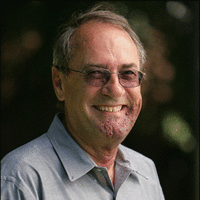Professor Chunming Qiao directs the Lab for Advanced Network Design, Analysis, and Research (LANDER), which conducts cutting-edge research with current foci on optical networking and survivability/availability in cloud computing, active-safety and infotainment in transportation systems, and low-cost and low-power sensors and mobile (robotic) sensor networks. He has published about 100 and 160 papers in leading technical journals and conference proceedings, respectively, with an h-index above 50 (according to Google Scholar). He pioneered research on Optical Internet, and in particular, the optical burst switching (OBS). One of his paper on OBS alone has been cited for more than 2000 times. In addition, his work on integrated cellular and ad hoc relaying systems (iCAR), started in 1999, is recognized as the harbinger for today's push towards the convergence between heterogeneous wireless technologies, and has been featured in BusinessWeek and Wireless Europe, as well as at the websites of New Scientists and CBC. His Research has been funded by ten NSF grants including two ITR awards, and by major IT and telecommunications companies including Alcatel Research, Fujitsu Labs, Cisco, Google, NEC labs, Nokia, Nortel Networks, Sprint Advanced Technology Lab, and Telcordia, as well as Industrial Technology Research Institute (in Taiwan). Dr. Qiao has given a dozen of keynotes, and numerous invited talks on the above research topics. He has chaired and co-chaired a dozen of international conferences and workshops. He was an editor of IEEE Transactions On Networking and Trans on Paralle and Distributed Sytems, and a guest-editor for several IEEE Journal on Selected Areas in Communications (JSAC) issues. He was the chair of the IEEE Technical Committee on High Speed Networks (HSN) and \the IEEE Subcommittee on Integrated Fiber and Wireless Technologies (FiWi) which he founded. He was elected to IEEE Fellow for his contributions to optical and wireless network architectures and protocols.
Dr. Janos Sztipanovits is currently the E. Bronson Ingram Distinguished Professor of Engineering at Vanderbilt University. He is founding director of the Institute for Software Integrated Systems (ISIS). His current research interest includes the foundation and applications of Model-Integrated Computing for the design of Cyber Physical Systems. His other research contributions include structurally adaptive systems, autonomous systems, design space exploration and systems-security co-design technology. He served as program manager and acting deputy director of DARPA/ITO between 1999 and 2002 and he was member of the US Air Force Scientific Advisory Board between 2006-2010. He was founding chair of the ACM Special Interest Group on Embedded Software (SIGBED). Dr. Sztipanovits was elected Fellow of the IEEE in 2000 and external member of the Hungarian Academy of Sciences in 2010. He graduated (Summa Cum Laude) from the Technical University of Budapest in 1970 and received his doctorate from the Hungarian Academy of Sciences in 1980.
Peter Volgyesi is a Research Scientist at the Institute for Software Integrated Systems at Vanderbilt University. In the past decade Mr. Volgyesi has been working on several novel and high impact projects sponsored by DARPA, NSF, ONR, ARL and industrial companies (Lockheed Martin, BAE Systems, the Boeing Company, Raytheon, Microsoft). He is one of the architects of the Generic Modeling Environment, a widely used metaprogrammable visual modeling tool, and WebGME - its modern web-based variant. Mr. Volgyesi had a leading role in developing the real-time signal processing algorithms in PinPtr, a low cost, low power countersniper system. He also participated in the development of the Radio Interferometric Positioning System (RIPS), a patented technology for accurate low-power node localization. As PI on two NSF funded projects Mr. Volgyesi and his team developed a low-power software-defined radio platform (MarmotE) and a component-based development toolchain targeting multicore SoC architectures for wireless cyber-physical systems. His team won the Preliminary Tournament of the DARPA Spectrum Challenge in September, 2013.
I am currently an Assistant Professor in the Department of Computer Science and Engineering at the University of South Florida. I was a Postdoctoral Associate at Mitsubishi Electric Research Laboratories (MERL), Cambridge, MA from Dec. 2007 to May 2008 and a Postdoctoral Associate in the School of Computing at the University of Utah from May 2008 to May 2009. I received my B.S. and M.S. degrees in electrical engineering from Dalian University of Technology, Dalian, China, in 1997 and 2000, respectively, and Ph.D. degree in computer science from the University of Utah, Salt Lake City, in 2007.
My research interests include robotics, haptics, computer vision, human computer interaction (HCI), and medical applications.


















